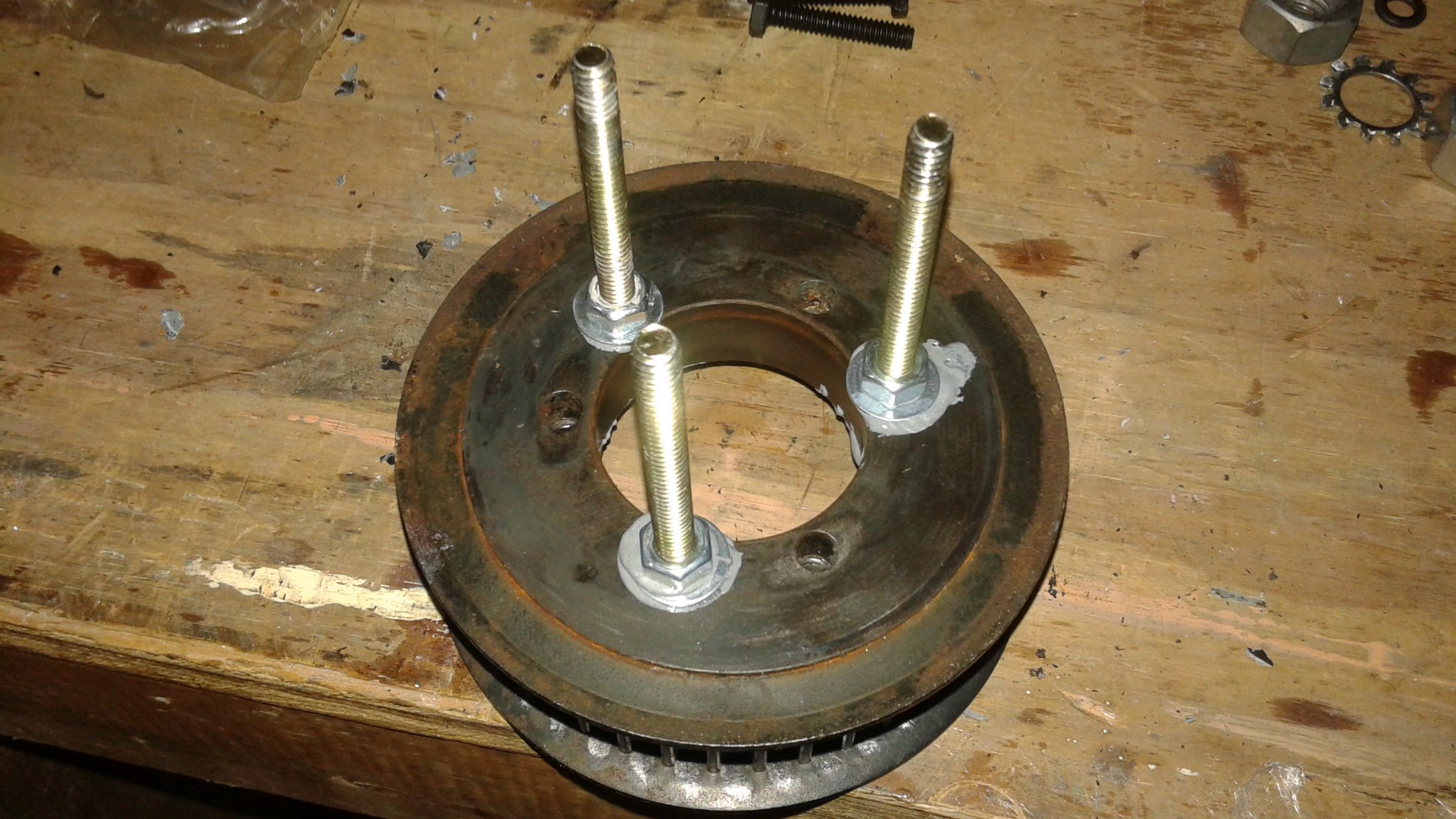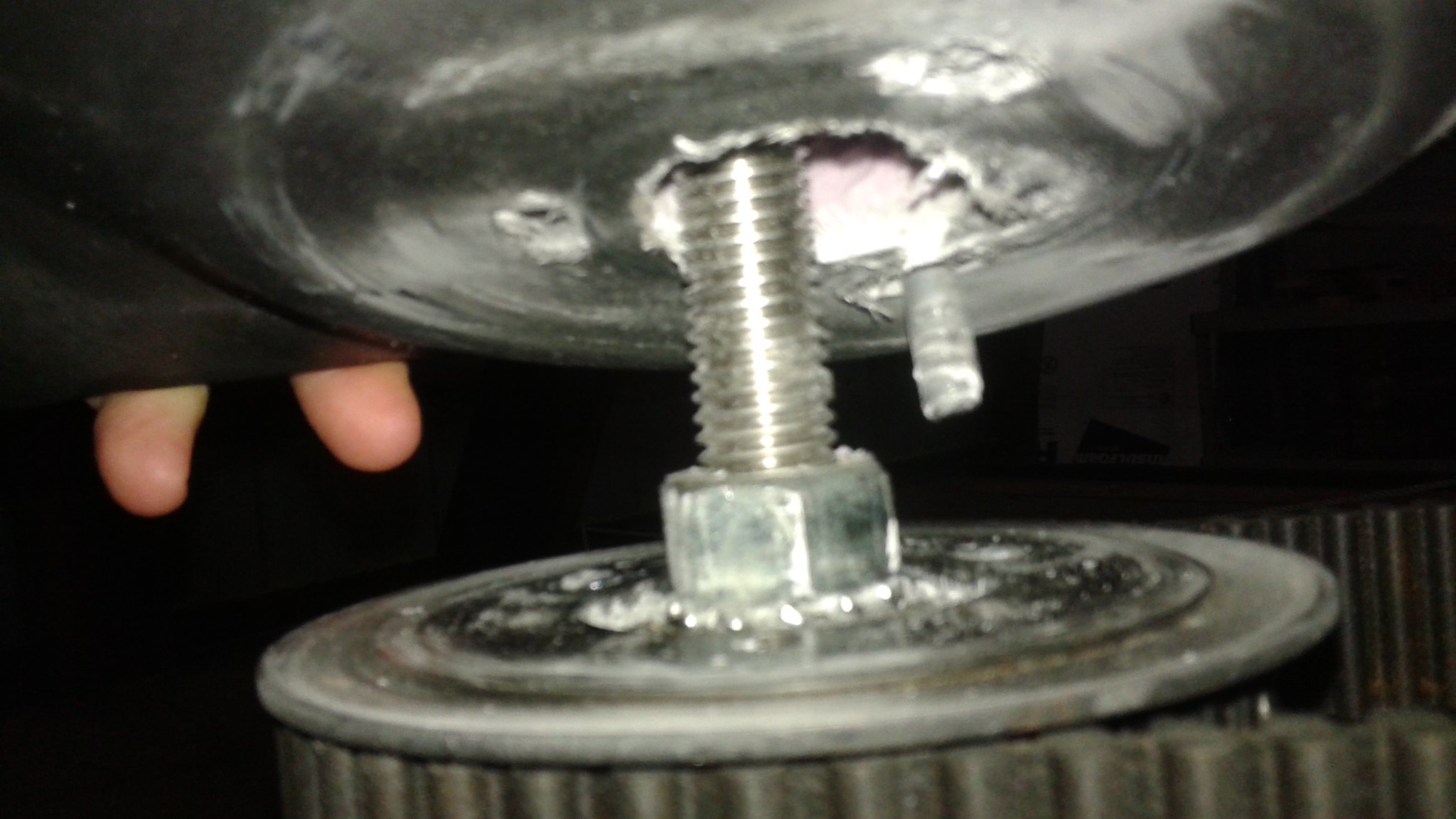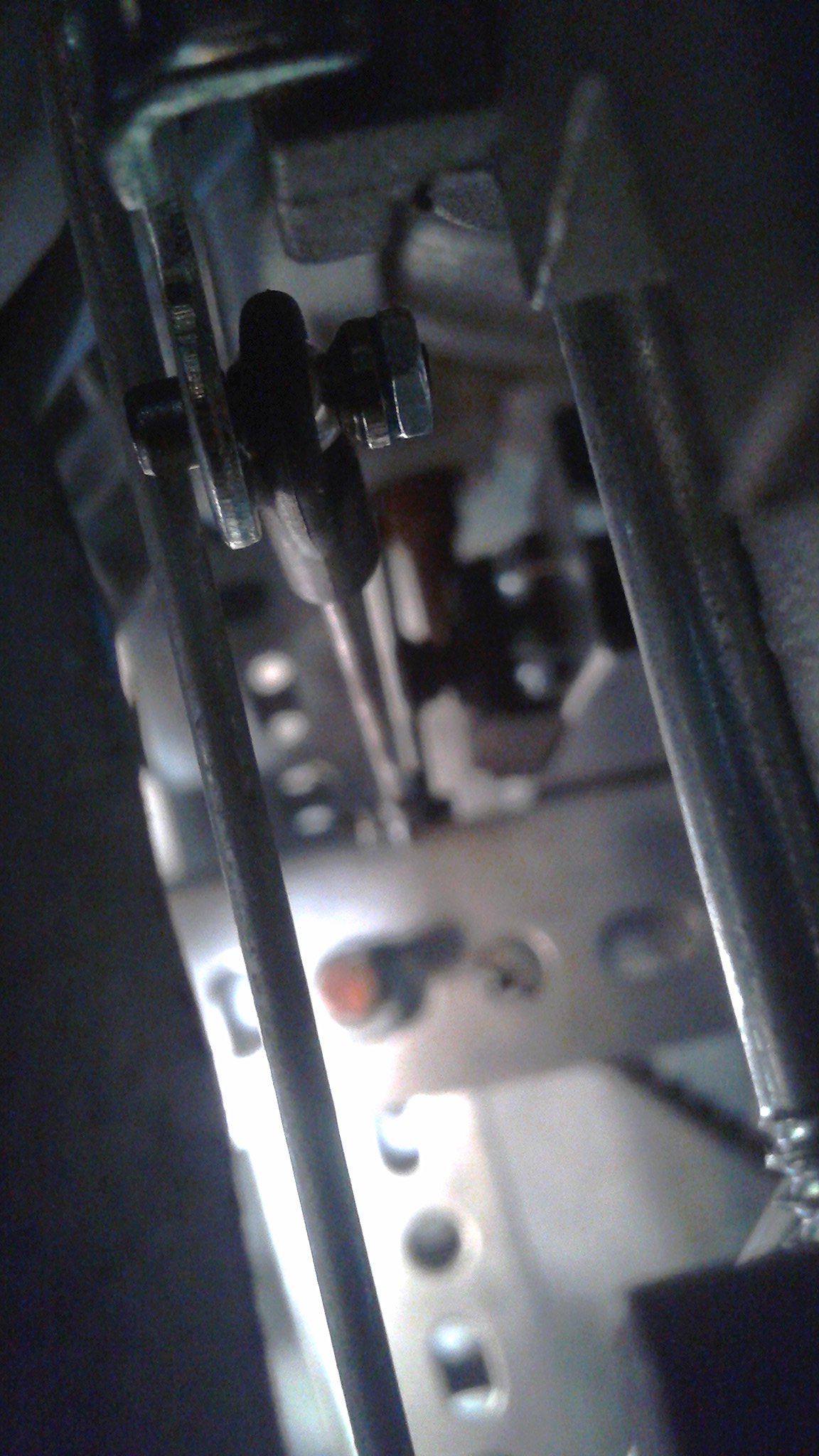The latest testing with the new rotors has been completed. However, Goliath still isn't flying. Most of the testing was troubleshooting Goliath after reassembly. It seems that a few tests are always required to get everything setup up correctly when Goliath has been reassembled. Below are the videos of the latest testing, then a description of what changes were made and what's next.
Tests 22 & 23
Mostly troubleshooting Goliath after reassembly, securing hardware and getting the belt tension correct. Increasing the throttle above idle has little effect.
Tests 24, 25 and 26
More of the same. Finally got the belt tension correct for test 26, but the propeller bolts fail toward the end of the test. The engine was still mostly unresponsive to throttle settings above idle.
Changes
New Rotors
A brand new set of propellers were manufactured since Test 21. The angle of attack at the tips was decreased to change the power vs. RPM curve to better match the engine. The new propellers should require less power at lower engine speeds, allowing the engine to rev up to higher RPMs. The new set of rotors is shown below.

Propeller Bolts
During prior tests the bolts attaching the rotors to the pulleys have broken on a few occasions (see prior project logs). The bolts are supposed to merely hold the bushing to the pulleys, but have been replaced with longer bolts that serve to also attach the rotors. This time around the original bolts were put back in and a new set of bolts were added to attach the rotors with. The purpose of doing this was to decouple the loads required to hold the bushing to the pulley together and the loads from the rotors. The new rotor bolts were epoxied with JB Weld into empty holes already present in the pulleys. Below is a picture of the bolts being epoxied in place. the nuts and washers are on the bolts to hold them in place.
 Obviously this didn't work. Two of the bolts were broken off and one of the bolts was pulled out of the hole. It's difficult to tell exactly what failed first. I suspect that the bolt that got pulled out of the hole didn't have a strong bond and failed first. The load on the other bolts increased, subsequently causing them to fail. Of course it's possible that one of the other bolts broke first and then the rest failed.
Obviously this didn't work. Two of the bolts were broken off and one of the bolts was pulled out of the hole. It's difficult to tell exactly what failed first. I suspect that the bolt that got pulled out of the hole didn't have a strong bond and failed first. The load on the other bolts increased, subsequently causing them to fail. Of course it's possible that one of the other bolts broke first and then the rest failed.

Choke Servo
Before test 21, a second servo for the choke was added, but until a few weeks ago the linkage hadn't been connected. Now the linkage is connected to the choke lever. Below on the right is the throttle servo and on the left is the choke servo.
 Connecting the linkage was problematic because the air intake is in the way. Below is a photo with the upper ball link installed and the tight clearances around the linkage. On the right is the side of the carburetor and on the left side is the air intake.
Connecting the linkage was problematic because the air intake is in the way. Below is a photo with the upper ball link installed and the tight clearances around the linkage. On the right is the side of the carburetor and on the left side is the air intake.
 In order to get the nut on the linkage, a special wrench was required:
In order to get the nut on the linkage, a special wrench was required: Having the choke servo made starting the engine much easier. Previously starting the engine involved closing the choke, running the engine for 30 to 60 seconds to warm it up, shutting down, then setting the choke to open and then performing the actual test.
Having the choke servo made starting the engine much easier. Previously starting the engine involved closing the choke, running the engine for 30 to 60 seconds to warm it up, shutting down, then setting the choke to open and then performing the actual test.
What's Next
Fixing the rotor bolt issue is the biggest item that needs to be resolved. So far the measures attempted accommodated the existing pulleys. It had already been apparent that custom rotor pulleys made out of aluminium would be needed to decrease the weight. Making these new pulleys is now on top of the list. Designing the pulleys is still in work, but the new pulleys will likely have six bolts instead of three. The new bolts will also be fitted bolts instead of fully threaded bolts (as @mechanicalsquid has discussed). There will be a project log in the future detailing the custom pulley design.
More data is also needed to figure out the engine issues, particularly engine RPM. There is already a hall effect sensor installed to sense the magnet built into the flywheel. It just needs to be utilized now to sense the engine RPM.
 Peter McCloud
Peter McCloud
Discussions
Become a Hackaday.io Member
Create an account to leave a comment. Already have an account? Log In.